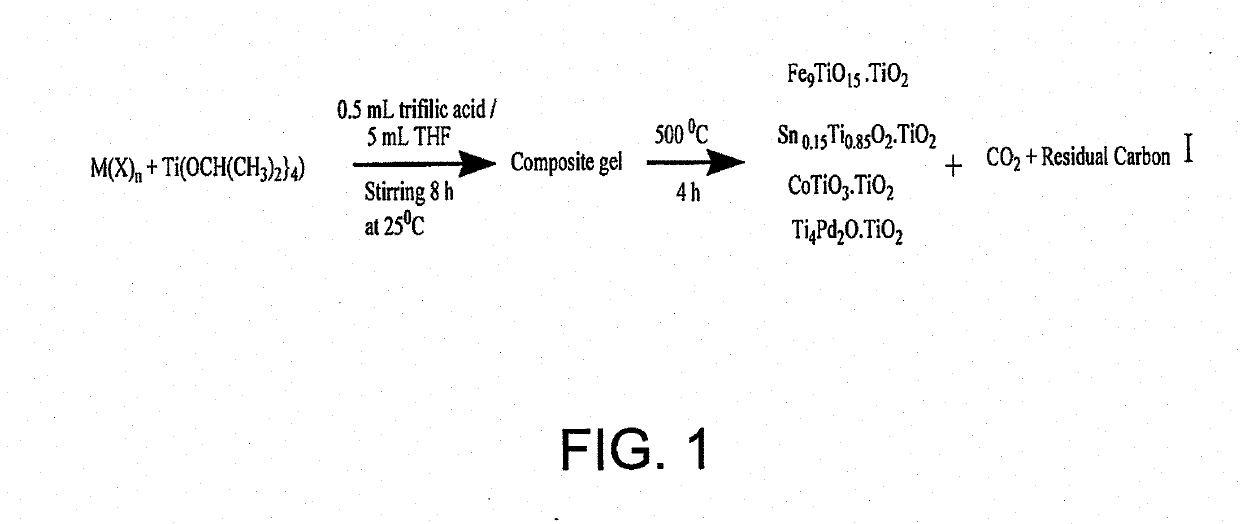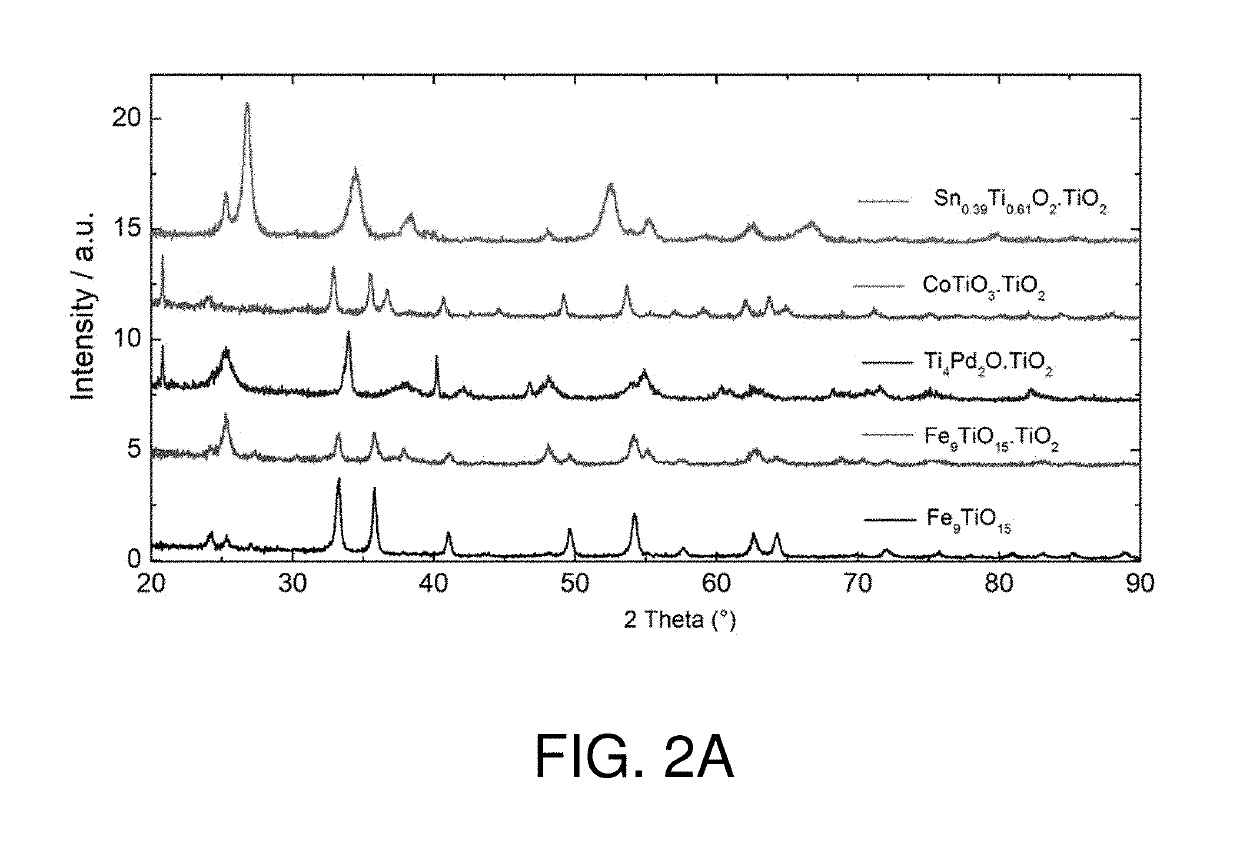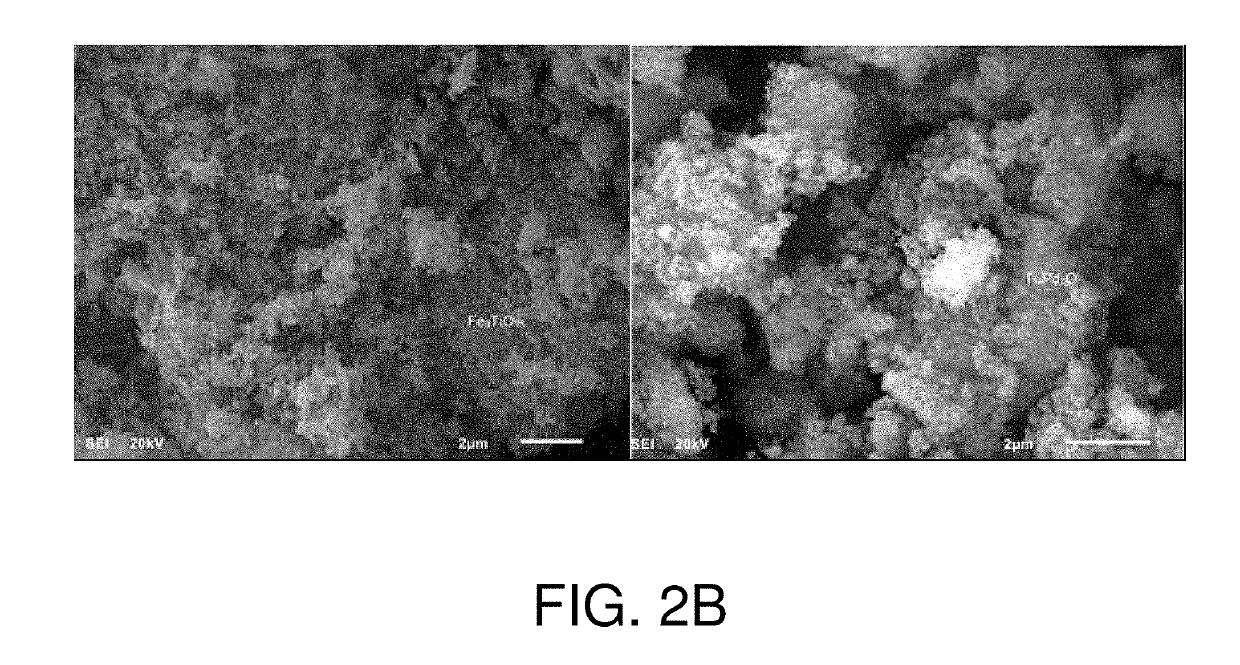Method for the synthesis of nanoparticles of heterometallic nanocomposite materials
a technology nanoparticles, which is applied in the field of preparation and synthesis of nanoparticles of heterometallic nanocomposite materials, can solve the problems of limiting the preparation of only few materials, taking extra care and challenging design,
- Summary
- Abstract
- Description
- Claims
- Application Information
AI Technical Summary
Benefits of technology
Problems solved by technology
Method used
Image
Examples
example 1
[0070]Synthesis of Fe9TiO15.TiO2 (Iron titanate). Ferrocence (1 g, 5.37 mM) was dissolved in 5 mL of THF, in a 20 mL glass bottle. TFC (0.2 mL, 22.6 mM) was added dropwise and slowly followed by dropwise addition of Titanium isopropoxide (1.80 μL, 0.59 mM). The reaction mixture was left on stirring for 2 hours. A gel was formed which was transferred to a crucible. The crucible containing all reaction mixture was placed in a muffle furnace. The furnace was heated to 500° C. at a rate of 4° C. per minute and kept at 500° C. for 2 hours. A solid yellow product Fe9TiO15.TiO2 was obtained which was characterized by XRD (FIG. 2A) and tested as catalyst for nitroarenes reduction to nitroamines.
example 2
[0071]Synthesis of Fe9TiO15.SiO2 (Iron titanate at silica). Ferrocence (1 g, 5.37 mM) was dissolved in 5 mL of THF, in a 20 mL glass bottle. 0.5 g of mesoporous silica (SiO2) was added as an external support, TFC (0.2 mL, 22.6 mM) was added dropwise and slowly followed by dropwise addition of Titanium isopropoxide (1.628 mL, 5.37 mM). The reaction mixture was left on stirring for 2 hours. A gel was formed which was transferred to a crucible. The crucible containing all reaction mixture was placed in a muffle furnace. The furnace was heated to 500° C. at a rate of 4° C. per minute and kept at 500° C. for 2 hours. A solid yellow product Fe9TiO15.TiO2 was obtained which was characterized and tested as catalyst for nitroarenes reduction to nitroamines.
example 3
[0072]Synthesis of Ti4Pd2O. TiO2 (Titanium palladium oxide at titania). Pd(NO3).xH2O (0.2 g, 0.8 mM) was dissolved in 5 mL THF followed by dropwise addition of TFC (0.2 mL, 22.6 mM) and slow addition of Tiisoproxide (1.314 mL, 4.335 mM) at the end. The reaction mixture was stirred for 2 hours, transferred to a crucible and placed in a muffle furnace. The temperature in the furnace was raised to 450° C., at a rate of 4° C. per minute, and held for 2 hours. A solid brown product Ti4Pd2O. TiO2 was obtained and characterized by XRD (FIG. 2A).
PUM
 Login to View More
Login to View More Abstract
Description
Claims
Application Information
 Login to View More
Login to View More - R&D
- Intellectual Property
- Life Sciences
- Materials
- Tech Scout
- Unparalleled Data Quality
- Higher Quality Content
- 60% Fewer Hallucinations
Browse by: Latest US Patents, China's latest patents, Technical Efficacy Thesaurus, Application Domain, Technology Topic, Popular Technical Reports.
© 2025 PatSnap. All rights reserved.Legal|Privacy policy|Modern Slavery Act Transparency Statement|Sitemap|About US| Contact US: help@patsnap.com



